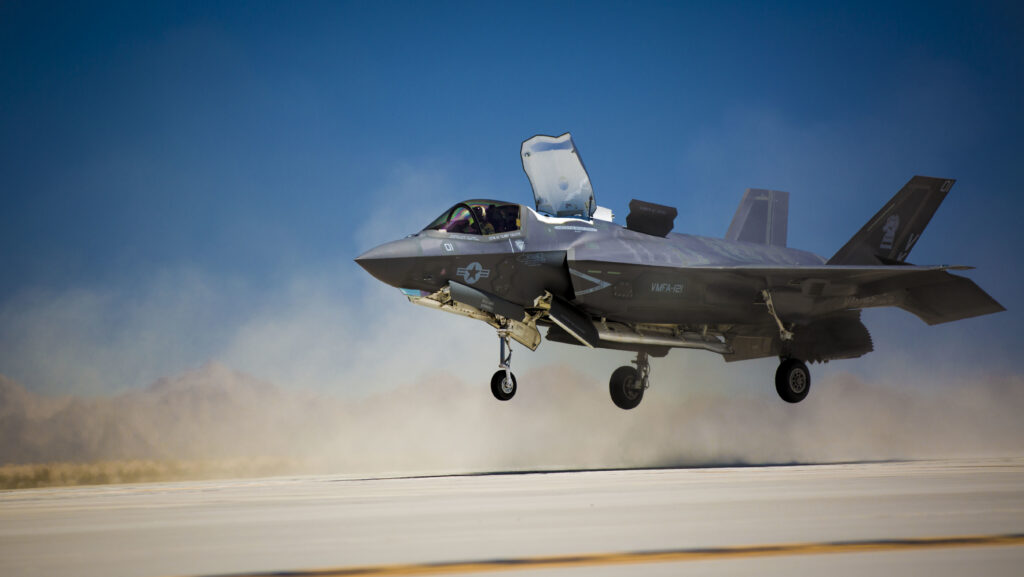
Raytheon has previously tested its expeditionary variant of the Joint Precision Approach and Landing System with both F-35Bs and F-35Cs. (File)
WASHINGTON: During a “no visitors, no fanfare” demonstration in June, the Marine Corps spent three weeks experimenting in Yuma, Ariz., with Raytheon’s expeditionary variant of the Joint Precision Approach and Landing System, according to company officials.
JPALS is a well-established Navy program integral to helping pilots make safe landings on aircraft carriers regardless of weather conditions, time of day or ship movements. The JPALS variant, developed by Raytheon through independent research and development funding, aims to take the same technology and make it usable anywhere in the world.
Having the ability to establish landing sites in any weather conditions or terrain could prove invaluable to the Marine Corps in the future fight as part of its Expeditionary Advanced Base Operations concept, which seeks to distribute Marines and their equipment throughout the battlespace.
The service, according to Raytheon, asked the company to bring its demonstrator and a handful of engineers to Marine Corps Air Station Yuma where pilots executed 50 landings, both vertical and straight in. At least one of those landings surprised even company officials, CJ Jaynes, a retired rear admiral now working for Raytheon, told Breaking Defense last week during the Sea Air Space exposition.
During the testing, the Marines asked Raytheon’s support team to move the system closer to an amphibious warship’s flight deck staged at Yuma. The engineers said the system could support the aircraft landing on the mock flight deck despite being 11 miles away.
“What was so unique about that was we never thought the demonstrator would be able to go that far of a distance,” said Jaynes. “We thought the demonstrator [would reach] maybe a half a mile because we had not really beefed up the software on that.”
The fully developed software is expected to support a 20 mile radius, she added.
Jaynes said the service expressed interest in the system, dubbed eJPALS, following the experimentation and were looking at ways of incorporating it into the next budget request. She also said the production for the variant is the same as the production for the carrier bound kits; the only difference being in how the product is packaged.
Raytheon believes eJPALS could be driven to locations by light ground vehicles or carried by helicopter depending on how the service wants to employ it.
Brooks Cleveland, who also works for Raytheon’s JPALS program and is a reserve Navy pilot, said the tests with the Marine Corps have given the company new ideas for how the system could be used.
For example, he said, an infantry Marine suggested the system could be used by infantrymen on patrol to fulfill a requirement that they are always in proximity to a medical evacuation point.
“We never even thought about that,” Cleveland said.
Multi-ship amphib buy could net $900M in savings, say Navy, Marine Corps officials
Lawmakers gave the Navy authorities to ink a multi-ship amphib deal years ago, but the service has not utilized that power yet.


























